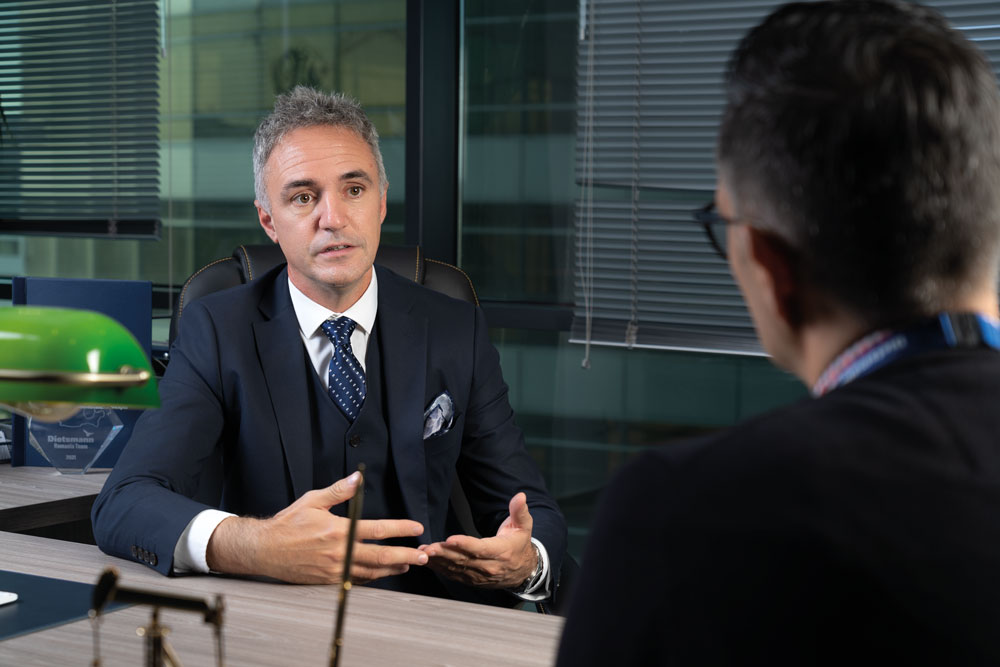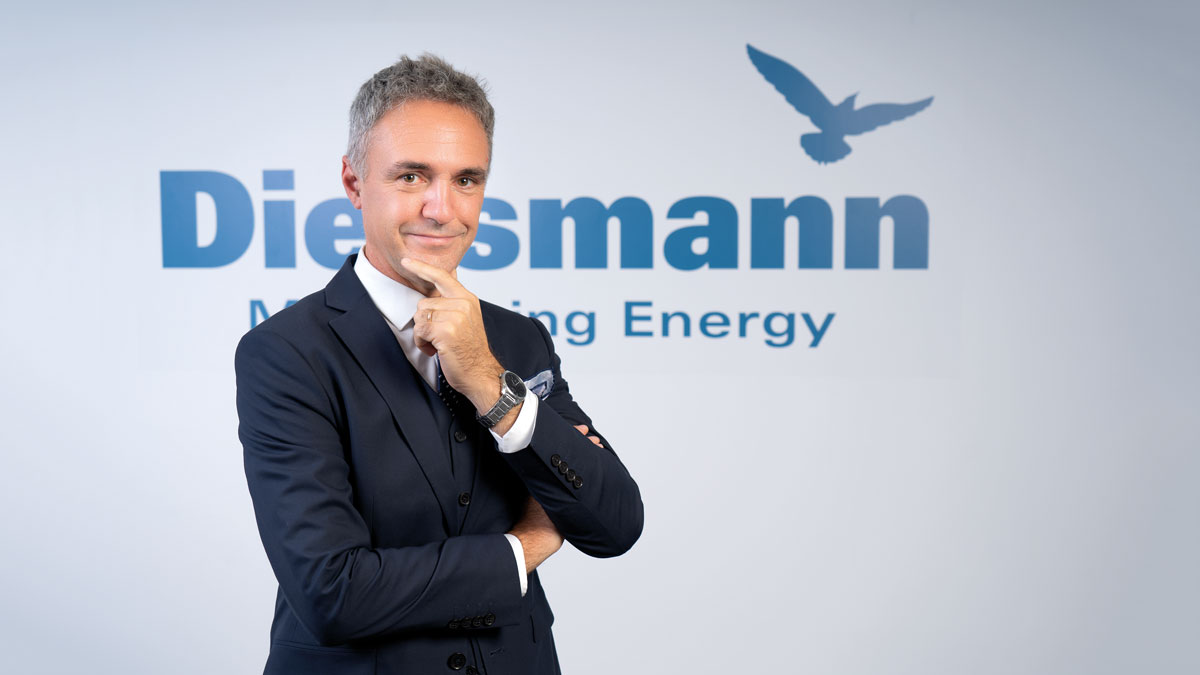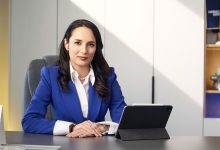Cesare Canevese: Dietsmann Leading the Way in Maintenance Optimization
Dietsmann’s newly appointed Managing Director Cesare Canevese explains how Maintenance Optimization provides the most effective use of systems whilst securing desired results at the lowest possible costs and minimizing downtime. He also offers solutions for developing optimal maintenance plans.
Dietsmann is the leading independent Operation & Maintenance (O&M) specialist for continuous-production plant in the oil & gas, conventional and nuclear power generation. The group has over 40 years-experience of operating and maintaining hundreds of production facilities around the world and applying the most effective operational methods and specialist maintenance technology.
Master level degree in Marine Engineering and Naval Architecture, Cesare Canevese served as a Navy Officer for more than sixteen years. He gained substantial experience, technical expertise, project management skills in the Navy General Staff and on military ships, holding roles of increasing responsibility from Engineering Officer up to Chief Engineer.
Having joined the industrial sector afterwards, he was involved in a large project in Iraq with Fincantieri as Technical Assistance Responsible for four ships the Italian Shipyard built for the Iraqi Navy.
In his present career in the Oil & Gas and Energy industry, he moved from the HR Department to Head of Tendering and Country/Region management all the way to his current role of Group Managing Director.
Dear Mr. Canevese, considering your key skills, what would you bring to your current job? Could you please describe your responsibilities as Group Managing Director within Dietsmann? What about your company’s business portfolio?
Cesare Canevese: I have been working within the Dietsmann Group in various departments, having the opportunity to acquire general and specific skills in various areas that are strategic for the Company. I am referring to Human Resources, Tendering, management of complex projects, but also Branch and Regional Area management. All these functions play primary roles in companies like ours. Dietsmann is in fact centered on human assets, from more than thirty different nations, that require effective management.
Dietsmann is constantly in the search for business development in various countries and sectors. The past experience as Head of Tendering gets me now the comfort to make strategic decisions about main technical and commercial matters with the highest effectiveness.
The management of strategic areas for the company such as Romania, first, and the Europe Region, after, allowed me to familiarize with large projects and branch activities both representing strategic areas for the company business. These are experiences that, if combined together, can contribute to consolidate the skills required for the management of a Company well-structured like Dietsmann.
My current position is central within the Organization and aims at defining the Group’s strategy – together with the other members of the Board of Directors – and achieving the business objectives. I am responsible for the executive planning of the company’s activities and coordination of the main business areas (customer relations, business development, operations, HSSEQ, HR, technology development, tenders, IT, communication).
Widening our Client’s portfolio is one of the priorities for the Group. Dietsmann has been operating in this highly competitive and dynamic context for almost forty-five years, successfully adapting to changes in the market as well as to the evolution of needs and requirements from various Clients. All targets have always been achieved in full compliance with law, regulations for safety at work and environmental protection. Over the years, we have performed Operations and Maintenance activities in both the O&G and power sectors, acquiring service contracts for the largest Companies. We are able to offer integrated service packages that vary from executing maintenance at any levels (including the overhaul of main equipment such as gas and steam turbines in collaboration with relevant OEMs) as well as a maintenance engineering (analysis of the operating parameters and elaboration of specific maintenance plans). In addition to consolidating the Group’s historical activities, we are currently highly committed in implementing new technologies within the Organization in order to meet the increasingly requests from our Clients. Our New Tech departments have the task to prepare and propose service packages for O&M based on the implementation of advanced solutions that include the use of robots designed for the manipulation of system items and acquisition of field data.
Our Engineering Department is tasked with the interpretation of those data captured during normal operations or predictive maintenance campaigns (vibration analysis, thermography, lubricant tests, …). This is one of the Dietsmann’s key strengths that allows to provide our Clients with detailed information on their asset integrity along with indications on how possibly implementing additional measures to improve equipment reliability over time.
Dietsmann is also involved in some brownfield activities, having acquired significant experience in the refurbishment of both upstream and downstream plants. This type of works requires an attentive planning by the Organization to carry out medium and long-term projects in the mechanical, electrical, instrument and civil trades. The technical background that Dietsmann boasts is a company asset, and it is unequivocally the basis of all our projects. Site Managers, Engineers and Technicians work in different fields and share their experiences at a corporate level, in order to consolidate the highest professionalism and quality within the Group. We can meet the requirements and needs of different Clients thanks to our ability in adapting to various contexts and sharing experience across the entire Organization.

Dietsmann established a company in Romania in 2017 and then decided to intensify the O&M business in the area. What is it worth mentioning regarding new projects/maintenance activities?
Cesare Canevese: The Romanian entity was established to pursue some tender opportunities in the Oil&Gas upstream sector initially offshore, subsequently onshore. In 2019 we enrolled in the General Surface Services (GSS) tender organized by OMV Petrom. Further to this, in 2020, Dietsmann took the decision to purchase KAROM, a Romanian services company, in order to get initial operational experience in Romania. Also, during 2020, we were awarded two lots of the tender GSS, thus increasing our activity significantly starting with 2021. Going forward, we believe we are uniquely positioned to share our expertise in maintenance & operations in several industry sectors in Romania – such as renewables – in addition to Oil & Gas, which has been our traditional field of activity.
The experts claim it is time for a new approach on climate change. What is Dietsmann’s strategy to optimize production, achieve significant cost savings, enhance safety, while reducing emissions in the environment?
Cesare Canevese: Dietsmann has a strong background in maintaining and operating O&G and Power generation facilities that allows the constant search for new solutions to improve the quality and safety of our services at site.
The necessity of adapting to requirements that evolve quickly in the sector we operate is factor leading our commitment to evolve towards the implementation of new technologies within our organization. Being one of our main targets, we are all committed to integrate those modern tools with the best maintenance practice.
Reducing methane leaks to the atmosphere is perhaps the single most important and cost-effective way for the industry to bring down greenhouse gas emissions. Dietsmann is very active in this regard and is starting to develop partnership with Companies to achieve this important target.
Optimizing the activities by having robots doing repetitive tasks may also contribute to reduce the carbon footprint in our activities. We can actually limit the mobilization of personnel from/to the sites to planned activities only.
All those solutions can be successfully integrated in the production system only if we a sound maintenance plan be put in action. The synergies between field engineers, digital platforms, robotics, data analysis have a huge potential for further development and mutual integration. Dietsmann has the broadest possible vision on this matter because can provide full-service packages that cover Client needs at 360 degrees.
Sometimes organizations are unclear if they are performing the appropriate amount of routine maintenance on their sites. What does ‘maintaining energy’ mean for Dietsmann?
Cesare Canevese: This is a concept of primary importance for Dietsmann as through proper maintenance we can maximize the reliability of the systems along with keeping very high level of safety and achieving significant cost optimization.
Predictive maintenance can drive us to define what the performance of a given equipment or system might be over time. This important approach, combined with the site knowledge (performance trends, past issues, overhauls carried out, frequency and cause of failures…) allows us to effectively collaborate with our Clients as trying to reduce the downtime at their plants and maximize the production rate. We are also very committed in supporting our Clients in the maintenance of the Safety Critical Elements (SCE) – very strategic assets for Companies in both O&G and Power – challenged by increasingly stricter requirements in terms of safety and environmental protection standards.
Dietsmann can analyse large amounts of data (operating parameters, performance trends, spare parts usage, …) and can draft maintenance plans optimized for a given facility. This can contribute to helping the relevant Client make optimal decision on investments (service and stock). Our analysis usually originates from some targeted areas (normally six to eight different parameters) and provides Clients with a detailed map of where improvements are potentially necessary.
We are committed to supporting our Clients in the medium and long term, without limiting our field activities to corrective maintenance only. By elaborating cause-effect analysis (FMECA) we always manage to identify the root problem and prevent it from recurring in the future. Our target is always aiming for the highest possible quality as delivering services to Clients.

What is the role of predictive maintenance? How does it work?
Cesare Canevese: Predictive maintenance is a field of activity which I have been working for some years in the past. The idea behind is to predict what possible trend a particular operating parameter may show over time. Systems and equipment work by emitting heat, often vibrations, and some of them require lubricants for proper operation. If we were able not only to capture the physical characteristics of these processes (temperature, pressure, vibrations) or lubricant chemical properties, but also to analyse their trend (deviation of actual values from standards set by the manufacturers) we could stop a given equipment before a failure occurs. This may also enable the mitigation of risks and hazards for the worker safety and environment protection. The approach is here totally different than traditional maintenance which reacts to failures (corrective) or plans intervention at given intervals (preventive).
Thanks to predictive maintenance, we can provide our Clients with service packages that lead to improve the system/equipment reliability with significantly shorter downtime. Through appropriate predictive maintenance campaigns, we can keep track of equipment functioning over time and plan interventions only when needs arise. The risk of unexpected failures and unscheduled shutdowns – with consequent negative repercussions on production – is significantly reduced.
Thanks to a wide knowledge of plant process and systems, digitalization and integrated data analysis, Dietsmann is now able to also predict the lifecycle of any given equipment and provide its Clients with a detailed report on actual performance and potential need for refurbishment for their assets.
Our predictive maintenance service is made of several work packages, each relevant to a specific scope, that cover the totality of requirements and needs any given Client may have in terms of asset management.
Is it possible to minimise maintenance costs and simultaneously maximise asset performance?
Cesare Canevese: The maintenance approach heavily influences the asset management activity and optimization results. We can have positive impacts on both technical aspects (higher degree of reliability and safety) and financial aspects (CAPEX, direct and indirect savings).
In the past, maintenance plans and practices originated from Vendor manuals, industry standard guidelines and team experience. Some of the activities and modus operandi were based on running hours and/or age, and most of them mirrored a time-based or even run-to-failure maintenance approaches. It was common for most of the equipment to be tested according to a given frequency (planned maintenance).
Today, the industry common practices switched over to emphasizing the equipment working condition.
The goal is to identify the right time and what actions to perform as intervening on a given equipment. This approach is the condition-based maintenance (CBM), and it is most effective way to achieve cost reduction, increase productivity and maintain a high degree of reliability and availability of the plant equipment. By doing so, you can also achieve significant improvements in the safety field. CBM is the highest point of the implementation of more general maintenance approach that is to say Reliability Centered Maintenance (RCM).
The condition assessment steps are fundamental in order to detect in advance the most important failure causes. It is vital to ensure the most effective maintenance interventions aimed at restoring an acceptable asset condition. Thanks to this assessment, you can detect most of the failure causes before they happen. We strongly encourage our Clients to take advantage of this knowledge and incorporate it in future engineering jobs such that the future facility becomes that much more ‘maintainable’, thereby further reducing lifecycle cost.
Design knowledge, failure modes and causes experience are the base to create efficient and effective data analytics for asset condition and risk analysis. Dietsmann has all those elements in its experience portfolio and can effectively support Companies in achieving the highest degree of operability at their facilities.
Digital technology becomes increasingly important in achieving business goals, and its omnipresent effects have resulted in the radical restructuring of entire industries. What do you believe the ways to create value by combining innovation, digital technology, people, and business strategy are?
Cesare Canevese: There are many ways of thinking how the whole system architecture could evolve in the future to ensure more accurate analysis of the system performance itself. The idea is to connect physical assets, such as equipment, with digital platforms in order to generate accurate insights, ensure quick response to problems, and improve the whole activity efficiency. To ensure digitalization can bring substantial improvement on the business, it is however necessary to integrate it across the whole activity. What we call full digital transformation will change the process of supplying energy to the entire world.
Data must be accessible and contextualized to engineering tasks driven through a digital thread that provides seamless data sharing and brings complete situational awareness across maintenance and operations. For these two strategic areas, having a common understanding of what the actual performance are and how they may be kept stable over time is a common goal to achieve the highest possible production rates and reliability degrees.
Implementing technologies like predictive alerts and accurate analytics are key factors to succeed in ensuring profitable and stable operations. In other words, you could combine the huge potential of intelligence from modern industry with the need of achieving optimal reliability in any situation.
Dietsmann’s strength is the integrated approach between new technologies and the technical expertise held by its staff. Today’s need is to acquire and analyse large amounts of data and parameters that can be classified according to priorities established by our maintenance engineers. This way, they have the opportunity of excluding all those factors that are not relevant in the decision-making process, focusing only on the elements of primary importance in plant management. The data of lesser importance, in a certain period, are not lost in any case, simply placed in the background. If, subsequently, the process changes such that they became crucial again, we would in any case have traced their evolution and be able to configure our activities accordingly.
This type of data pre-processing is possible effectively only through algorithms that are developed in the context of new technologies. The concept is that the human being, while remaining central to the decision-making process, is supported by artificial intelligence to optimize and speed fundamental choices up.
What are from your viewpoint the best solutions for developing optimal maintenance plans?
Cesare Canevese: An effective plan needs to cover all the features of a given facility’s maintenance policy.
By being able to understand which of the parts of a given plant are the most important (right assets), and what should be done to maintain an optimal level of reliability of the asset (right maintenance) and how often to intervene in there (right time), it is possible to draw up plans for very effective and efficient maintenance, with a substantial cost reduction as a further result.
To do this, it is important to carry out an in-depth analysis of the plant in question, also identifying its critical issues through a gap analysis, that is, we determine what the difference is between best practice and actual performance. This way we define the best way to go between the starting point (current) and the goal (future). This analysis is of primary importance and involves our engineers who have the task of drawing up a final report. This shall allow the Project management to properly allocate the resources (human and technological) necessary to fill the gap, first of all, and maintain the quality level and performance as highest as possible.
For a continuous development and improvement of maintenance plans, seamless feedback is required so that it allows to identify what the objectives already achieved and which way we did so. Also here, new technologies, combined with in-house competence and expertise, ensure prompt tracking of the activities, identifying difficulties in real time. This allows us to understand where there may be areas for improvement and avoid problems in the future. We should also consider this is a centrally managed process, done in close collaboration with the field engineers, as aiming at consolidating the results and experiences acquired at a corporate level. After some years spent in rolling out and managing projects worldwide, Dietsmann can discern if any problems are contextualized or not. In other words, we can easily extrapolate the issue, and compare its effects with similar cases elsewhere, in order to troubleshoot faster and smarter at any point in time.
From your perspective, how can Romania benefit from its abundant natural resources and its equilibrated energy mix? What do we miss to achieve that?
Cesare Canevese: Our experience in Romania has been that of quite challenging business conditions owing to a number of factors. Perhaps the most significant among them, notwithstanding the COVID-19 pandemic, is the very complex regulatory environment, which at times seems unnecessarily burdensome. Therefore, I believe that the key to maximizing the energy potential of the Country, as well as its business potential in a more general sense, would be a simplification of all processes that involve the interaction between businesses and State authorities. We have been noticing improvements driven by the digitalization of some branches of Public authorities and we hope this trend continues to the benefit of all parties involved.
How is Dietsmann going through this period of crisis caused by the COVID-19 pandemic and how do you see the return to the level of activity, prior to the period of crisis?
Cesare Canevese: The repercussions of COVID on the sector are very complicated in different energy types and consumption patterns. The energy industry is on the way to understand the complicated impacts and identify emerging opportunities. Demand for oil and natural gas fell sharply due to widespread quarantine in various parts of the world. This decline in demand has pushed the price of hydrocarbons to quite low level in years. The investment went down and many problems in international transportation arose. Since the COVID outbreak began, Dietsmann has been very active in finding solutions to ensure normal operations at site, and our personnel promptly answered the various calls to keep performing activities in difficult conditions.
In this very challenging period, we also successfully rolled out two large projects, one of which in Romania. The extensive experience Dietsmann has gained in the sector allowed us to properly manage the several contracts ongoing and possibly implement solutions to increase the effectiveness in project management.
A major transformation with interesting opportunities is coming out in the whole energy sector. Technology will open new frontiers as it always has. In my opinion, this may be seen as a catalytic crisis for innovation, launch, and design of new industry structures and cost levels. In the petrochemical and power industries, this is a unique opportunity for Companies and Contractors to get closer to each other and change to digital and innovative business models based on Client demand.
Planning ahead, what would be Dietsmann’s future focus?
Cesare Canevese: In parallel with the consolidation of the historic O&M business, both in the O&G and Power fields, Dietsmann is committed to the implementation of new technologies at the service of its customers.
We have already decided to invest a few years ago in this modern sector, where robotics plays a role of primary importance. We are currently engaged, together with our partner Taurob, in an industrial program of development and provision of services carried out through the use of robots. The activities they perform can range from inspections to routine site activities. Robots have the unique peculiarity to do repeated tasks with absolute quality and no deviations over time. This can ensure error-free operations at site in all those contexts where difficult environmental conditions may challenge normal operators and technicians in their routinely jobs. The repeatability of some process, like inspecting equipment, may also be of great appreciation whenever the data acquisition requires the exclusion of human errors in the subsequent data analysis.
Having robots that can perform potentially dangerous jobs for humans is one of the reasons that pushes us to invest in this sector. Furthermore, these assets can be used as mobile data acquisition platforms even in those parts of the plant that are usually not very accessible.
Through digital data sharing and processing systems we can provide an integrated package of services that can meet the changing needs of our customers. We are very much oriented in developing those integrated services that may significantly contribute to lower costs and improve the response time in reacting to problems. Our target is a combination of factors that can really make Companies achieve the most cost-effective asset management.







